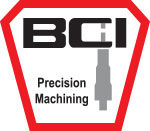Laser Engraving has become quite popular over the last 15 years due to the vast advancements in technology. The first laser engraving machines were monstrous in size and required massive water or air cooling units in order to operate efficiently. Today’s models are so well designed that some are the size of a PC case and require a few 120mm fans to cool. The technology has seen massive adoption across multiple industries including promotional products, aerospace and other part manufacturers who require laser marking on their inventory.
Laser Engravers come in a variety of different formats that are best suited for particular industries and product materials. CO2-based lasers work well for items such as woods and plastics, while ND:YAG and Fiber-based lasers work best on materials such as steel, nickel and aluminum. Typically, Laser Engraving machines operate based on a mixture of frequency, speed and focus in order to work properly. The machine fires laser energy at the desired material which creates heat at the point of focus, while the beam itself has no temperature. As such, it’s important to achieve a proper focus, or the laser simply cannot mark the material.
The lenses in Laser Engraving machines typically operate in one of two ways – fixed lens radius or track size. The latter is relegated mainly to CO2 and certain Fiber-based laser systems and involves the use of a bed-style laser where products can be set up single, or multiple at a time. A track mechanism marks products by moving the laser back and forth across the bed at high speeds to draw out the final design. Fixed lens radius lasers are typically stationery and involve the use of galvo-driven mirrors that adjust at blinding speeds to properly mark the material. Both types of lasers have their advantages and disadvantages. Fixed lens lasers do not need to physically move back and forth as a track-based laser needs to, but tend to offer smaller marking sizes in comparison.
Laser Engraving machines are considered a Class IV laser device, and require the use of specially designed safety goggles with proper filtering material in order to prevent severe eye injury or even blindness. This pertains mostly to open units, while many of today’s models include a door or hatch mechanism with special shielding so operators can keep tabs on a job without succumbing to eye damage. Most laser machines are incapable of damaging human skin given the necessary focusing properties mentioned before. However, care should still be exercised to provide mild or severe burns, depending on the intensity and power output of the laser. In short, don’t place your skin in the direct path of a laser.
B.C. Instruments uses 2 FOBA G10 Laser Engraving units which provide state of the art advancements in laser marking technology. This incredible machine is capable of not only marking products in the 2-dimensional space, but 3D deep engraving as well. At 100 watts, this is one of the more powerful lasers on the market with a rotary axis and a 120 x 120mm2 engraving field. This allows for large sized products or multiple smaller items to be engraved at a moment’s notice. We also utilize a Fiber Tower marking system from PTG Industries which features a powerful fiber-based laser to create 2D symbologies, linear barcodes, OCR code marking, alphanumerics, logos and more.
For more information on how B.C. Instruments can take care of your product marking needs, get in touch with us today. Our superior laser systems and skilled operators guarantee precise quality work with high cost-effectiveness and a quick turnaround time.
Contact Us Now